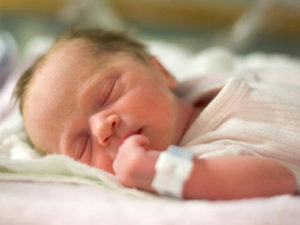U.S. government agencies (such as FDA) say phthalates are OK, but evidence is mounting that they definitely are not OK. It's impossible to totally avoid phthalates, but one can lower exposure amounts by eating whole unprocessed foods, not microwaving or storing food in plastic containers (best is glass), and read ingredient lists on labels, including personal care products. From Medical Xpress:
Plastics chemical tied to changes in boys' reproductive development
When expectant mothers are exposed to plastics chemicals called phthalates during the first trimester, their male offspring may have a greater risk of infertility later in life, a new study suggests.Boys exposed to the chemical diethylhexyl phthalate (DEHP) may be born with a significantly shorter anogenital distance than those not exposed to these chemicals. Anogenital distance is the distance between the anus and the genitals. A shorter anogenital distance has been linked to infertility and low sperm count, the researchers explained.
"We saw these changes even though moms' exposure to DEHP has dropped 50 percent in the past 10 years," said lead researcher Shanna Swan, a professor of preventive medicine and obstetrics, gynecology and reproductive medicine at the Icahn School of Medicine at Mount Sinai in New York City. "Therefore, we have not found a safe level of phthalate exposure for pregnant women," she contended.
Swan said that this study cannot prove that these boys will have fertility problems as adults or that DEHP causes these problems. However, animal studies have implicated the chemical in male reproductive problems. Based on the data from this study, Swan believes there is a strong association between exposure to DEHP and fertility in human males.
DEHP is used to soften plastics. Most exposure results from eating foods that pick up the chemical during processing, Swan said. "Since food is the largest source of DEHP for consumers, it is difficult for pregnant women to minimize exposure," she said. "Eating unprocessed food will likely help. However, eliminating DEHP from food really has to be done by food producers."The chemical is also found in medical tubing and in a variety of products, including flooring, wallpaper, lacquers and personal care products, Swan said.
For the study, Swan's team collected data on almost 800 pregnant women and their infants.Specifically, the researchers found that exposure in the womb to three types of DEHP was associated with a significantly shorter anogenital distance in boys, but not in girls.
A group representing the chemical industry took issue with the study, however. In a statement, the American Chemistry Council (ACC) stressed that the study only examined one type of phthalate, not all versions of the chemical... The ACC added that DEHP "is known to break down into its metabolites within minutes after it enters the body.
But another expert says phthalate exposure may not be benign. Dr. Kenneth Spaeth, director of the Occupational and Environmental Medicine Center at North Shore University Hospital in Manhasset, N.Y., said, "virtually everyone in the U.S. experiences continual exposure to phthalates."And, a number of studies have tied the chemicals with changes in developing fetuses. "Phthalates, in particular, have been shown in both human and animal studies to interfere with normal fetal development," he said.
This study supports what has been demonstrated before, that phthalate exposure in the first trimester is linked to male reproductive development, Spaeth said. "This study is an important step forward in establishing this effect because the study included a much larger number of individuals than prior studies and helps identify one particular agent, DEHP, as an important contributor to this effect," he said.Additionally, this study shows the importance of exposure in the first trimester as a critical window for the effect of phthalates on the male reproductive system.

 After my
After my  Nice write-up of how what happens from the type of birth (vaginal vs cesarean) affects the baby's microbiome (community of microbes). Remember, it is very complicated and much is still unknown. (UPDATE: see January 16, 2015
Nice write-up of how what happens from the type of birth (vaginal vs cesarean) affects the baby's microbiome (community of microbes). Remember, it is very complicated and much is still unknown. (UPDATE: see January 16, 2015  Once again air pollution is linked to health problems, this time exposure during pregnancy is linked to congenital malformations (what are commonly called birth defects). From Science Daily:
Once again air pollution is linked to health problems, this time exposure during pregnancy is linked to congenital malformations (what are commonly called birth defects). From Science Daily: